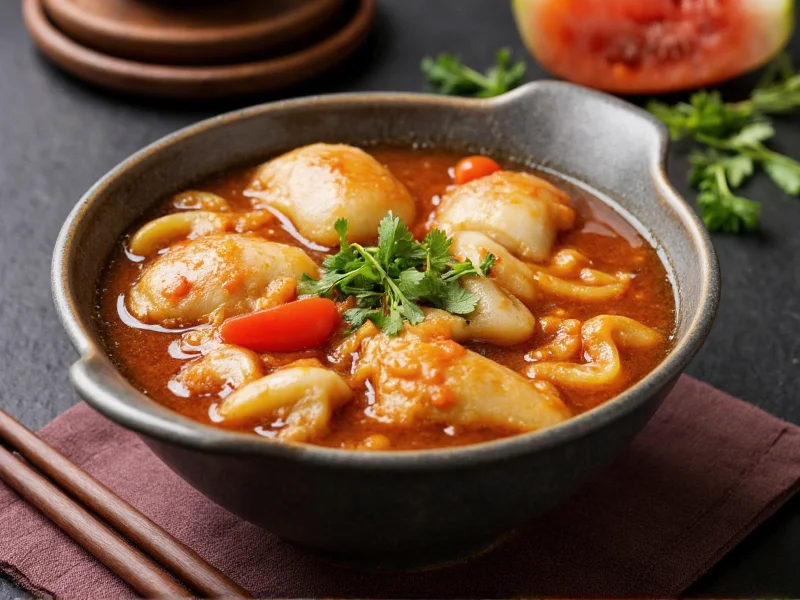Chinese soups represent one of the most sophisticated culinary traditions in the world, with recipes perfected over thousands of years. Unlike Western soups that often serve as starters, Chinese soups frequently function as complete meals or therapeutic remedies. The best authentic Chinese soup recipes balance flavor, texture, and nutritional harmony according to traditional Chinese medicine principles.
The Cultural Significance of Chinese Soups
In Chinese culinary tradition, soups aren't merely food—they're considered essential for maintaining health and balance. Traditional Chinese Medicine (TCM) categorizes soups by their warming or cooling properties, making them appropriate for specific seasons or health conditions. Families often prepare nourishing soups daily, with many recipes passed down through generations. The most authentic Chinese soup recipes emphasize fresh ingredients, precise cooking times, and balanced flavors rather than heavy seasoning.
Essential Components of Authentic Chinese Soup Recipes
Mastering Chinese soups requires understanding these fundamental elements:
- Broth foundation - Clear broths use chicken, pork, or vegetarian bases simmered for hours
- Aromatic base - Ginger, scallions, and garlic form the flavor foundation
- Seasoning balance - Light soy sauce, sesame oil, and rice wine in precise ratios
- Texture elements - Tofu, mushrooms, bamboo shoots, or egg ribbons
- Medicinal additions - Goji berries, dried mushrooms, or herbs for specific health benefits
Mastering the Classic Egg Drop Soup Recipe
This authentic Chinese egg drop soup recipe serves as the perfect introduction to Chinese soup making. Unlike restaurant versions that often use cornstarch, traditional home cooking relies on egg texture for body.
Ingredients for Authentic Chinese Egg Drop Soup
- 4 cups quality chicken broth (homemade preferred)
- 1 tablespoon fresh ginger, thinly sliced
- 1 tablespoon light soy sauce
- 2 large eggs, whisked
- 1 teaspoon sesame oil
- 2 green onions, finely sliced
- White pepper to taste
Step-by-Step Preparation
- Bring broth and ginger to gentle simmer in medium pot (do not boil vigorously)
- Add soy sauce and simmer for 5 minutes to infuse flavors
- Slowly drizzle whisked eggs into broth while stirring broth in one direction
- Cook for exactly 60 seconds until egg forms delicate ribbons
- Remove from heat and stir in sesame oil
- Serve immediately with white pepper and green onions
Four Essential Chinese Soup Variations
Once you've mastered the basic technique, explore these traditional Chinese soup recipes that showcase regional diversity:
| Soup Type | Key Ingredients | Preparation Time | Special Technique |
|---|---|---|---|
| Hot and Sour Soup | Bamboo shoots, wood ear mushrooms, tofu, vinegar | 25 minutes | Balance vinegar and white pepper precisely |
| Wonton Soup | Homemade pork wontons, bok choy, shrimp | 45 minutes | Perfect wonton folding technique |
| Winter Melon Soup | Winter melon, dried scallops, pork bones | 2 hours | Slow simmer for clear broth |
| Vegetarian Buddha's Delight | Mixed mushrooms, lotus root, goji berries | 30 minutes | Layering vegetarian "umami" flavors |
Professional Techniques for Authentic Results
Chinese culinary masters employ specific methods that transform simple ingredients into extraordinary soups:
- The ice cube trick - Adding one ice cube when drizzling egg creates finer ribbons in egg drop soup
- Broth clarification - For crystal-clear broths, start with cold water and maintain gentle simmer without boiling
- Seasoning timing - Add salt only at the end to prevent toughening meat ingredients
- Ginger preparation - Lightly crush ginger to release oils without making broth bitter
- Final oil drizzle - Always add sesame oil off-heat to preserve its delicate flavor
Avoiding Common Chinese Soup Mistakes
Even experienced home cooks make these errors when attempting authentic Chinese soup recipes:
- Over-boiling egg - Creates rubbery chunks instead of silky ribbons (keep heat low when adding egg)
- Using dark soy sauce - Dark soy colors broth but doesn't enhance flavor like light soy
- Adding ingredients in wrong order - Delicate items like leafy greens should go in last
- Skipping the ginger - Essential for balancing flavors and aiding digestion in Chinese cuisine
- Over-seasoning - Authentic Chinese soups highlight natural ingredients rather than masking them
Storage and Reheating Guidelines
Proper storage maintains the delicate balance of authentic Chinese soup recipes:
- Cool soup completely before refrigerating (within 2 hours of cooking)
- Store in airtight containers for up to 3 days
- Reheat gently over medium-low heat—never boil reheated soup
- Add fresh garnishes like green onions after reheating
- Freeze broth-based soups (without egg or starch) for up to 3 months
Adapting Chinese Soup Recipes for Dietary Needs
Traditional Chinese soup recipes can accommodate various dietary requirements while maintaining authenticity:
- Vegetarian versions - Substitute mushroom broth for meat broths, add dried shiitakes for umami
- Gluten-free options - Use tamari instead of soy sauce, ensure broth is gluten-free
- Low-sodium adaptations - Reduce soy sauce by half and compensate with more ginger and garlic
- Quick preparation - Use quality store-bought broth but enhance with fresh ginger and scallions
Final Thoughts on Authentic Chinese Soup Making
Creating truly authentic Chinese soup recipes requires understanding that Chinese cuisine values the natural flavors of quality ingredients over heavy seasoning. The most satisfying Chinese soups achieve harmony between taste, texture, and nutritional properties. Start with the egg drop soup recipe as your foundation, then gradually explore more complex regional specialties. Remember that patience with broth preparation and precision with timing separate adequate soups from extraordinary ones. With practice, you'll develop the intuition that transforms simple Chinese soup recipes into nourishing culinary experiences that connect you with centuries of culinary tradition.











 浙公网安备
33010002000092号
浙公网安备
33010002000092号 浙B2-20120091-4
浙B2-20120091-4